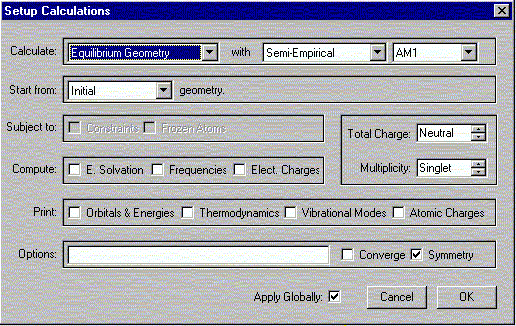
Problem set #2 (Meeting 2)
ATTN: answers to the below questions are due at the start of meeting 2; these answers should be part of your pre-lab write-up. Show pertinent equations where appropriate.
1. Referring to the benzoin condensation, answer the following questions.
a. Why is thiamine used as a catalyst in this reaction and not sodium cyanide?
b. Why is it important to have fresh benzaldehyde for this reaction? How can 'old' benzaldehyde be purified?
c. The reaction mixture has to be homogeneous. Explain briefly.
d. In some cases, the product does not precipitate from solution. Suggest two methods how the crystallization can be initiated.
2. Referring to the elimination reaction, answer the following questions.
a. Give three reasons why the mixture is heated during the reacion.
b. A saturated sodium chloride solution is added during the work-up. Explain briefly why.
c. How can you determine which layer is the organic layer and which one is the aequous layer in this experiment?
d. How are you going to acquire the IR spectrum for the final product in the lab? Outline a brief procedure.
e. What are the most important changes in the IR spectrum going from cyclohexanol to cyclohexene (functional groups and wavenumbers)?
3. Vacuum fitration
a. Draw a sketch for the setup used for the filtration of the benzoin and label all parts needed.
b. Why is it important to use a filter paper with the correct size?
c. Why should the filter flask be clamped during the filtration?
4. Using PC Spartan 2002 at the Science Learning Center (4th Floor Young Hall) do the following:
a. Do the following calculations for the alkenes: terpinolene, limonene, a-terpinene, isoterpinolene. Make sure that all hydrogen atoms are present.
b. Select Calculations from the Setup menu.

The following window should appear. Select the options shown.

Verify that the Charge is Neutral and Multiplicity is Singlet. Click OK.
Select Submit from Setup menu.

Then click OK to exit dialog. Close the previous window.
Select Submit from Setup menu. When the calculation is completed you will be notified. It should not take more than 1-2 minutes for the calculation to complete under normal circumstances. Make sure that you have only one window open at this point. The messages are usually displayed in the first window, and often not in the window you are working in at this point.
Under the Display menu, select Properties. Record the value for the Energy.

1. Based in the observed trends in trends in the heat of formation (=energy), which alkene is the most stable and which one is the least stable one? Can you rationalize these observations? Do the obtained data match with your expectation? If not, what is the conclusion?
2. Can you explain the product distribution observed for the elimination of water from a-terpinol?
Problems with calculations: Check here